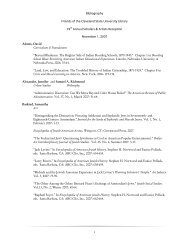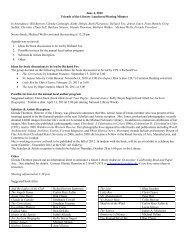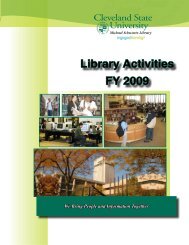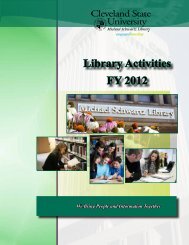revolutionary action movement (ram) - Michael Schwartz Library
revolutionary action movement (ram) - Michael Schwartz Library
revolutionary action movement (ram) - Michael Schwartz Library
Create successful ePaper yourself
Turn your PDF publications into a flip-book with our unique Google optimized e-Paper software.
90<br />
The leadership of the national office of CORE publicly opposed<br />
Brooklyn CORE . James Farmer and Roy Wilkins came out against<br />
Brooklyn CORE . For the SNCC came out in support of Brooklyn<br />
CORE . For the first time, the question of Black people disrupting<br />
the system was advanced in the civil rights <strong>movement</strong> . This<br />
tactic of Black people disrupting the economy, or a city of the<br />
government was a different kind of tool . The stall-in was not<br />
successful because it had been publicized in advance and the<br />
police were waiting . 14<br />
While the Stall-in was not successful, it raised questions of the possibility<br />
of the <strong>movement</strong> disrupting the functioning of the system .<br />
Two events occurred in March, 1964 that changed the<br />
direction of the<br />
black liberation <strong>movement</strong> . Malcolm X announced his independence from the<br />
Nation of Islam and Robert F . Williams' article "Revolution Without Vio<br />
lence," in the February, 1964 issue of Crusader reached the States .<br />
Robert<br />
Williams' article "Revolution Without Violence" raised many eyebrows . In<br />
it he described how many blacks could bring the U .S . to a standstill through<br />
urban rebellions and urban guerrilla warfare . This went beyond the concept<br />
of armed self-defense .<br />
Almost every activist was watching Malcolm's development to see<br />
in<br />
what direction he was heading .<br />
Freeman from the BLF was at Malcolm's press<br />
conference and encouraged him to proceed in a more radical direction .<br />
Freeman decided it was time to challenge SNCC concerning the concepts of<br />
armed self-defense and black nationalism on its own home grounds, the South .<br />
He called Stanford to Cleveland and<br />
gave him instructions to organize an<br />
all-black student conference in the south . The BLF had connections with<br />
nationalists who were inside local SNCC groups . One particular group was<br />
the Afro-American Student Movement (ASM)<br />
at Fisk University in Nashville,<br />
Tenneessee .<br />
14 Don Freeman, "Black Youth and Afro-American Liberation," Black<br />
America , (Fall 1964), pp . 15-16 .








